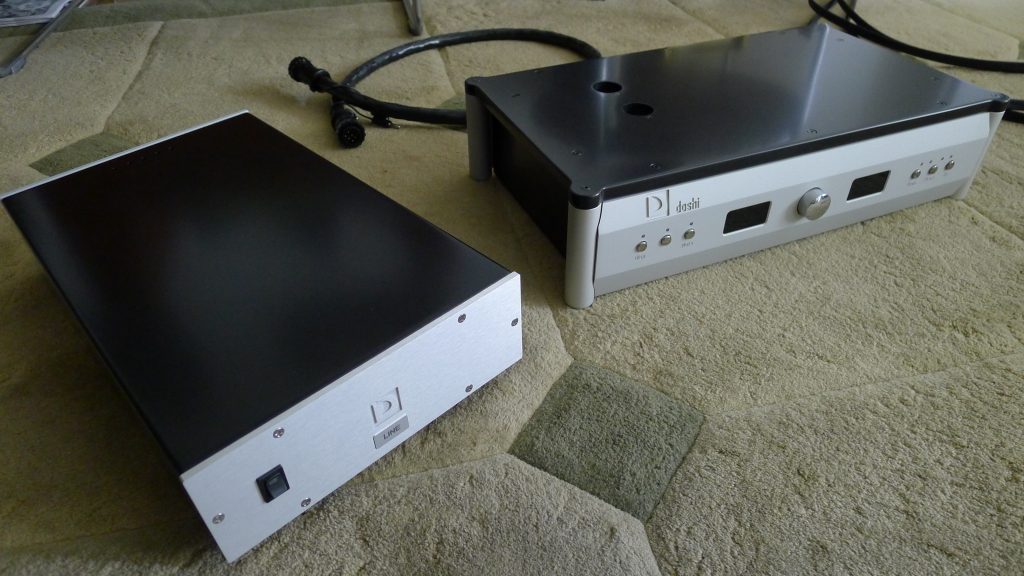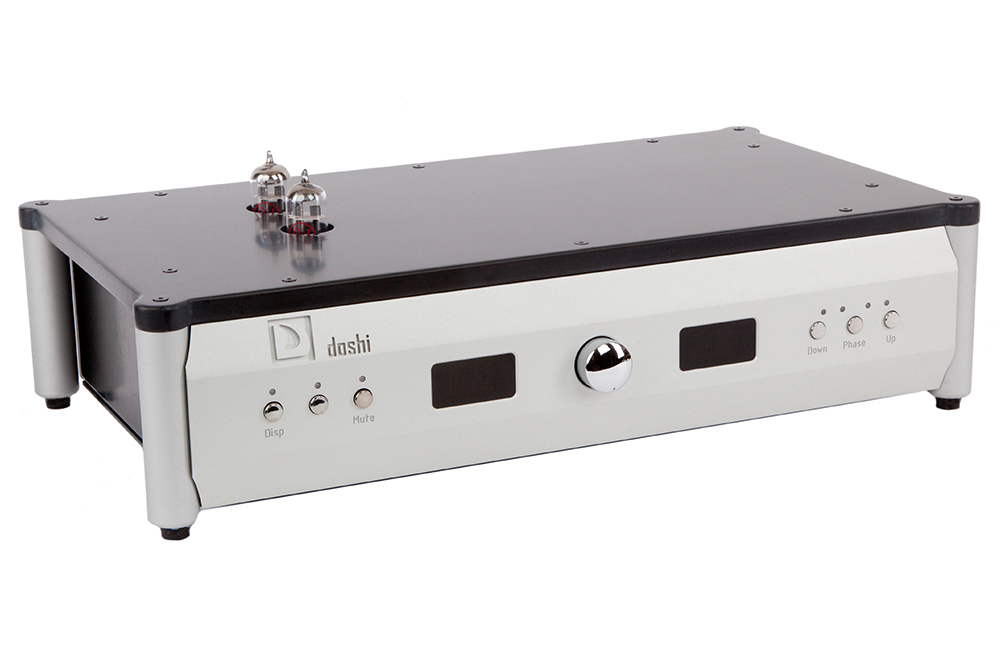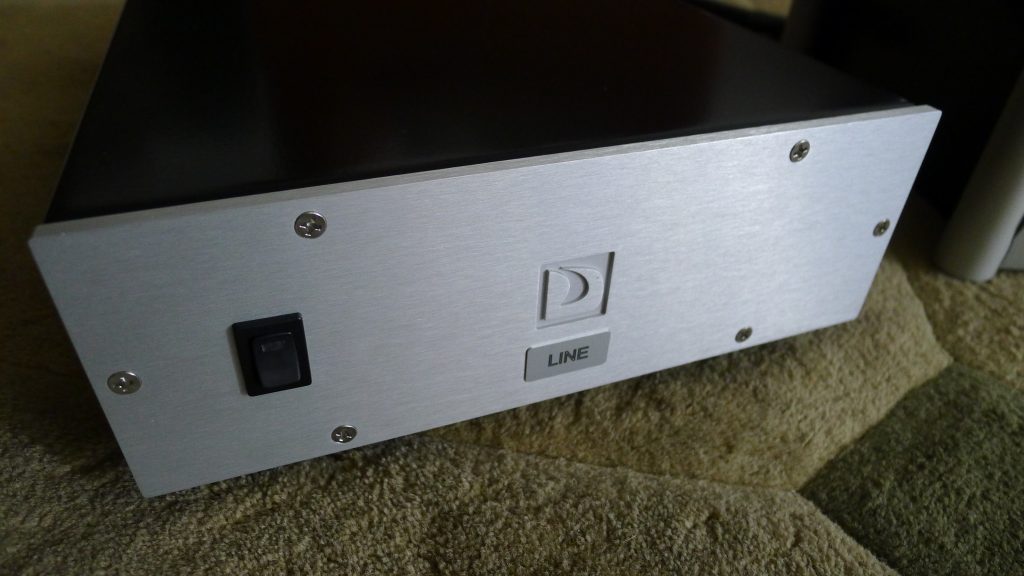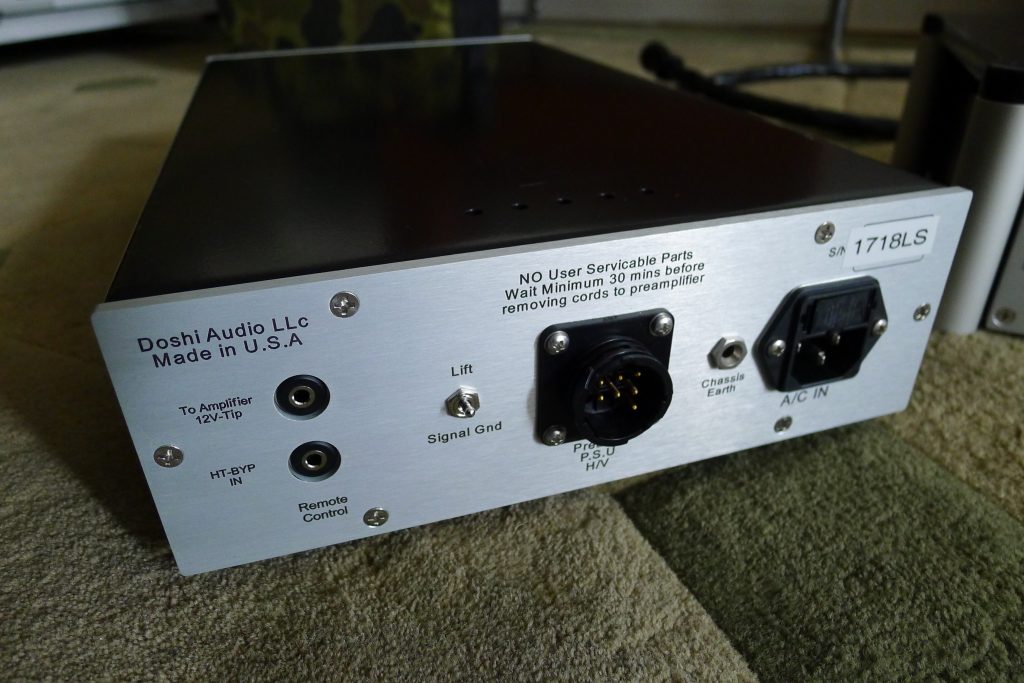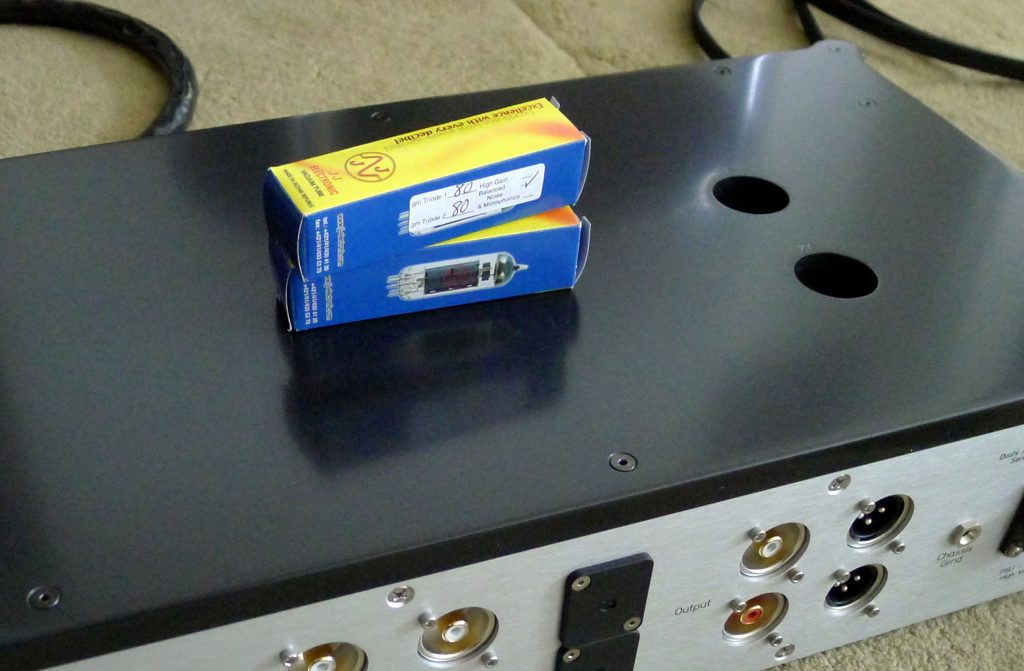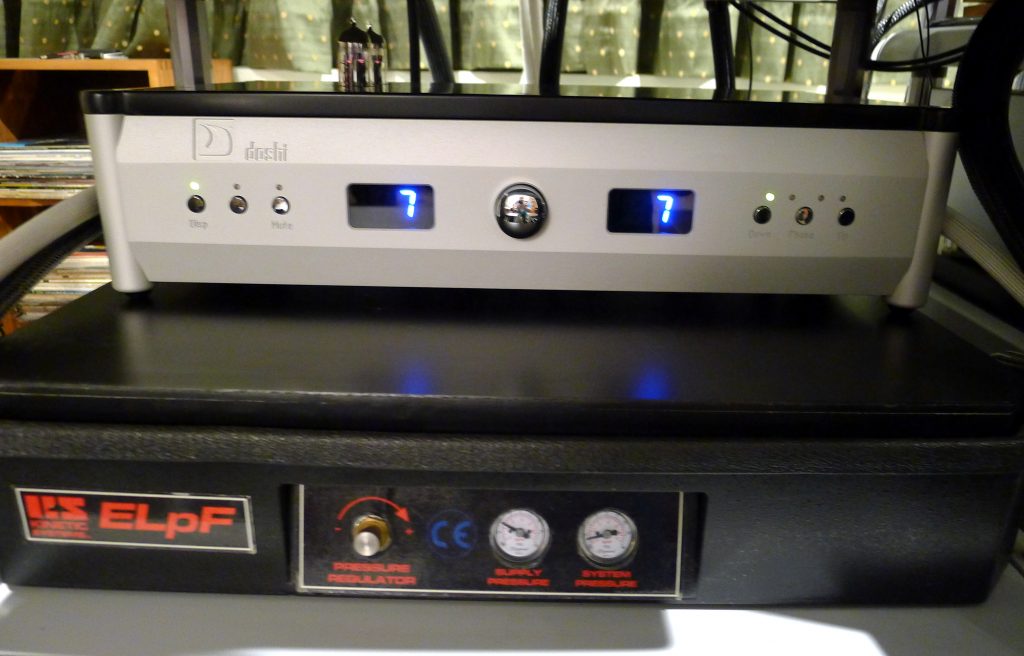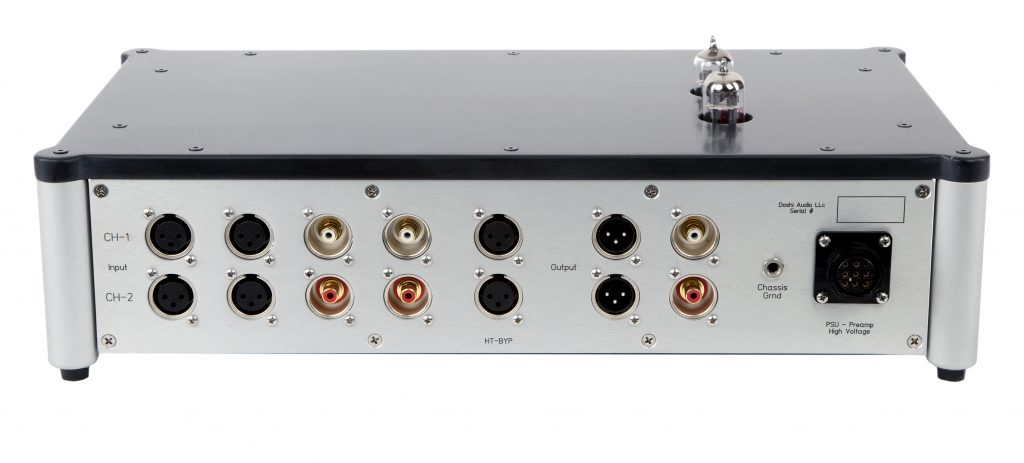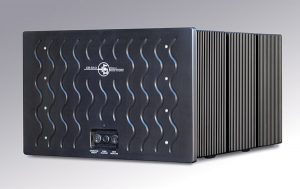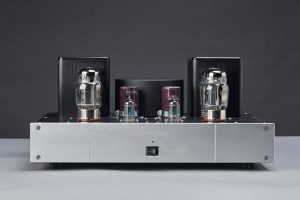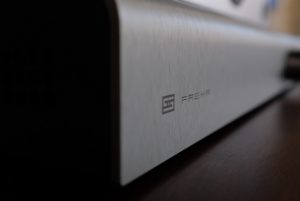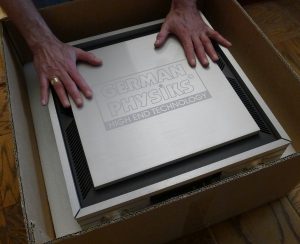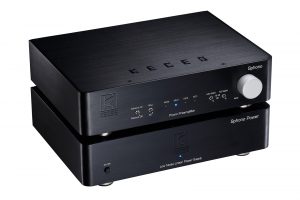Where are the Gatekeepers?
Even as audio-related content has proliferated on the web, I tend to spend my browsing time elsewhere. The three reasons are: the slippage in quality, the ubiquitous upbeat bias, and the sheer redundancy. Click on the latest hardware article and it won't take long to realize you've already read it—just replace the product in the subject line. While some will see this as confirmation of my narrow interests, I won't deny it—I emphatically agree.
In my view, honing your tastes and being focused—whether in music or audio critics—is a point of pride. There are only a handful of writers that I enjoy regularly. My PF associate Myles Astor is one of them, and it was via his write-ups that I got wind of Doshi Audio (HERE), especially after he gave their Tapestage a Writers Choice Award recently. Further accolades came from another PF associate, Greg Weaver, in a private email exchange. Having these guys in their corner clinched it. Although I still had not heard any Doshi products, I contacted them post haste about their new Preamplifier V3.0.
Early Onset Audiophilia
Nick Doshi caught the audio bug early. It happened at a classical symphony concert and a chance encounter with a recording engineer, who indulged the ten-year old by playing back the tape of the concert he had just recorded. Nick was hooked. From there his story follows a familiar narrative: building audio equipment for friends as a hobby, forging a career as a radio station engineer, and then taking the plunge in 2006 when he established Doshi Audio. The company, now based in Virginia, has kept a low profile, but that is starting to change with online product reviews coming out and visibility at audio shows.
As far as circuit design, Nick tends to follow his own drummer. This is reflected in the company's refreshingly down-to-earth and somewhat iconoclastic mission statement.
The Doshi philosophy can be expressed in one word: balance, of classical and cutting-edge technologies, of eastern and western sensibilities, of professional and residential design strengths…
General Description
In 2015 the product line was revamped. The Preamplifier V3.0 replaced the company's first product, the Doshi Line Preamp. Here's the Pre V3.0 overview:
To meet Doshi's mandate of design simplicity, a single gain stage is used, with one ECC99 Dual-Triode vacuum tube per channel. No negative feedback is employed; output impedance is kept very low.
Four differential inputs are provided. Two XLR and two RCA are standard, but these can be configured as either XLR or RCA, depending on the customer's needs. Likewise, there are two sets of outputs, one each for RCA and XLR. These are also configurable to customer's requirements.
The remote handset controls all functions.
Manufacturer's Technical Statement
Digging down into the internals, the Pre V3.0 boasts some interesting features worthy of exploring in detail. I asked Doshi to provide a bullet point summary (edited):
- Transformer Volume Control
Doshi designed a transformer-coupled volume control using the principle of Galvanic Isolation. The TVC internally converts all inputs, whether RCA or XLR, to true balanced operation and creates a buffer between the input and output sides of the unit. In other words, the TVC mechanically and electrically isolates the preamps' inputs from the outputs.
- Three Stage Decoupling ™
Behind its sculpted aluminum faceplate, the chassis of our preamplifier incorporates Doshi's Three Stage Decoupling™ technology to virtually eliminate the influence of both external and internal resonances. Inside the chassis, critical audio circuits are point-to-point wired and mounted on an acoustically isolated sub-chassis. The entire sub-chassis is suspended from a ½" thick slab of laser-cut, DuPont Corian. The heavy Corian slab is the top plate of the chassis. It is, in turn, mechanically decoupled from the sides of the chassis by vibration absorbing spacers in each corner.
Both main and power supply chassis are constructed from extremely strong, powder-coated, 14-gauge, non-magnetic stainless steel, an extra expense undertaken to achieve freedom from resonance and unmatched strength.
- Ultra-Stable Power Supply
An over-sized toroidal transformer (designed by Doshi and manufactured by Toroid), plus massive amounts of capacitance and three levels of current filtration provide enormous reserves of high-purity power. The transformer is massively over-specified to prevent the kind of resonances that occur when a transformer is run at full capacity.
Special care went into selecting the umbilical cable connecting the main chassis and PSU. We have found it has an outsized impact on sound quality. Many prototypes were tested before we settled on a 9 conductor, heavily damped and shielded wire made to our specifications by New England Wire, a supplier to some of highest-end audiophile cable companies.
- Over-Specified Parts
All internal components are oversized, so that no part is ever driven at or near its limit. Over-specifying parts prevents stress, distortion, dynamic compression and maximizes reliability.
La Musica
Let's begin with the Shostakovich Symphony No. 5, a splendid Reference Recordings SACD that's been monopolizing top slot in my demo pile for months (FR-724). It just won a pair of Grammy Awards for Best Orchestral Performance and Best Engineered Album. As befits this renowned audiophile label, the thunderous volleys from the percussion and double basses at the beginning of the second movement comprise a severe torture test of your woofers' excursion and recovery time.
This is also the moment of truth for the component's power supply. Will it pass muster and let the tutti shake, rattle, and roll? Or will it become weak-kneed (the usual case)? Subjected to this level of stress, unfortunately the majority of preamps wimp out, hit a dynamic ceiling, and stop growing, even as the signal continues to expand. Or, even worse, actual distortion sets in and the soundstage collapses.
Power supply front view
The Doshi PSU kept its cool and sailed through those tutti, letting the crescendo grow as few components do. Right here is where all the extra effort and attention to detail in the rather large, over-specified, Ultra-Stable Power Supply pays off. The main, or control, chassis may be physically small, but, by golly, this guy sounds really big. The Doshi PSU enables huge weight and low-end slam that left nothing to be desired. I just sat there mouth agape and took it in. The low-end was actually a little too much. The first thing I did was turn down the volume of the powered subs on my YG Anat speakers.
Power supply rear view
Once I adjusted to these eye-opening dynamic crests, I was gobsmacked again by the rock-steady positioning of the images and the solidity of the soundstage. Soundstage topology is often shakey and unsure; this was massive and firmly rooted in place. The large, full-bodied images were set in precise coordinates on the map of the stage and didn't move.
And then the third hammer blow. It was clearly hi-res and resolved into the furthest corners. There were no vague or murky areas anywhere. This thoroughgoing transparency is evidence of superior resonance and vibration control, the things that all too often degrade clarity. The design team's going the extra mile in their Three Stage Decoupling gets the credit here.
Early on I was considering what kind of footers I might try under the Doshi. I asked their advice and was advised not to:
Damping and Isolation is a major focus of Nick Doshi's design efforts. Please do NOT use any sort of footers, as the Three Stage Decoupling™ technologies employed in the design and construction of this Preamplifier render them unnecessary.
Getting back to Mr. Shostakovich, following the low-end salvos, the bassoons spin a quiet melody. They sound so reedy (make that double-reedy), with that unique kind of buzzing artifact that they often produce. A solo violin enters that is so sweet, it had me wondering: is the principal violinist really that good? These low-level passages were handled with no fall-off in detail, texture, and instrumental vitality.
And so it went. The Doshi's full-bodied tone, sweet timbres, and overall coherency are definitely not kin with the lean and mean, solid-state, speed demons plentiful today. Rather, it has a sound that hints at the Golden Era of early analog.
Cable Fine Tuning
To accommodate the Doshi's voicing, the second thing I did was move to more neutral wires. I was using a Kubala•Sosna Elation! power cord and CH Precision Reference interconnects. This combination brought out the tubey side of the hybrid Doshi with mixed results: good soundstaging width and height (but not such good depth), not enough control, and too much warmth.
So I swapped in a TARA Labs The Muse power cord (HERE) for the K•S E!. This tightened up the bottom and cooled the tonal temperature. Ah, yes, that was a move in the right direction.
Next, I played around with interconnects. A TARA Labs The Muse IC in place of a CH Ref gave more of the same, but had it become too locked-tight now? I backed out The Muse IC and put in a K•S E!.
When all was said and done, I wound up with the TARA Labs The Muse power cord and the K•S E! interconnects. Cable fine-tuning is a mandatory exercise anytime you change a component.
Installation
The Doshi Preamp went on my TAOC rack, with the main chassis on a Vibraplane ELpF active air support platform. The PSU sat on a constrained layer wood platform. I had been advised that, as this was a demo unit, it should not need much burn-in. Even so, it needed 48 hours on the tuner to open up.
The volume control has 31 discrete steps, although there are no detents and it doesn't click as you move it. The action is smooth as silk as you rotate the knob on the front panel. Only the number in the display will change.
One point of clarification: There is a note in the manual about waiting 30 minutes after shutdown before disconnecting the umbilical. That's unusual, so I inquired what it was about:
The power supply has reservoir capacitance in the PSU unit as well as the Amplifier unit. This takes time to drain down after the unit is turned off (approx 5-10 minutes). No damage will occur to the circuitry if the units are disconnected before then but there will be a sparking sound when the umbilical plug makes or breaks contact which may be disconcerting to some. There are other protection methods in the power supply and preamplifier to protect against shorts and tube removal / insertion while the unit is running as well as the mains fuse.
The power cord can be removed without concern.
Conclusion
The new Doshi Preamplifier V3.0 may be physically small but, boy-o-boy, it sure can pack a punch. The powerful statement of its low-end was the first thing I noticed—so much so, that I had to dial down my powered subwoofers. That low-end partnered with the unit's extraordinary dynamic headroom gave it the ability to ride in sync with the most challenging orchestral material. This was uncommonly satisfying, and a tribute to the unit's well-designed external power supply.
Similar efforts targeting resonance and vibration elimination were evident in the thorough-going transparency achieved at all signal levels. Obscurity was banished and the soundstage opened up, allowing an easy walkabout deep into the furthest corners.
The Doshi hits above expectations in every category on the audio report card. Its voice is tempered by a pair of valves that add beauty, warmth, and timbral variety. Always acoustic, always ingratiating, you'll find that voice refreshingly far from a solid-state signature.
This leads me to conclude that, with careful choice of wires, the Doshi Pre V3.0 is the one to beat at $20K and under.
Line Preamplifier V3.0
Retail: $17,995
Doshi Engineering
Manassas, Virginia
Manufacturer's Response
All of us at Doshi Engineering wish to thank Marshall Nack and Positive Feedback Magazine for their thorough and detailed review of our v3 Line Preamplifier. In just a few short pages, Mr. Nack guides the reader through the technical highlights that comprise the Doshi Design Philosophy, reveals all of the setup and fine-tuning procedures he undertook in order to achieve optimal sound from the component and gives us an insightful description of the Preamp's sonic prowess.
We're delighted that Marshall found our v3 Preamplifier "…hits above expectations in every category on the audio report card," and that he admired the component's detail, dynamics and soundstaging abilities. His conclusion that "the Doshi Pre V3.0 is the one to beat at $20K and under" is precisely the sort of testimonial that makes Doshi Engineering's years of research, development and relentless refinement worth the effort.
At Doshi Engineering, we pride ourselves on building equipment for music lovers. Behind this thoughtfully written review is a seasoned professional who possesses a vast knowledge of music, experience with high end audio playback and exemplary writing skill. The trifecta as far as this manufacturer is concerned. Well done, Marshall!
It is our sincere hope that Positive Feedback readers will have the opportunity to audition our v3 Line Preamplifier and experience all of the qualities which Mr. Nack found so special.
Nick Doshi, President
Doshi Engineering




